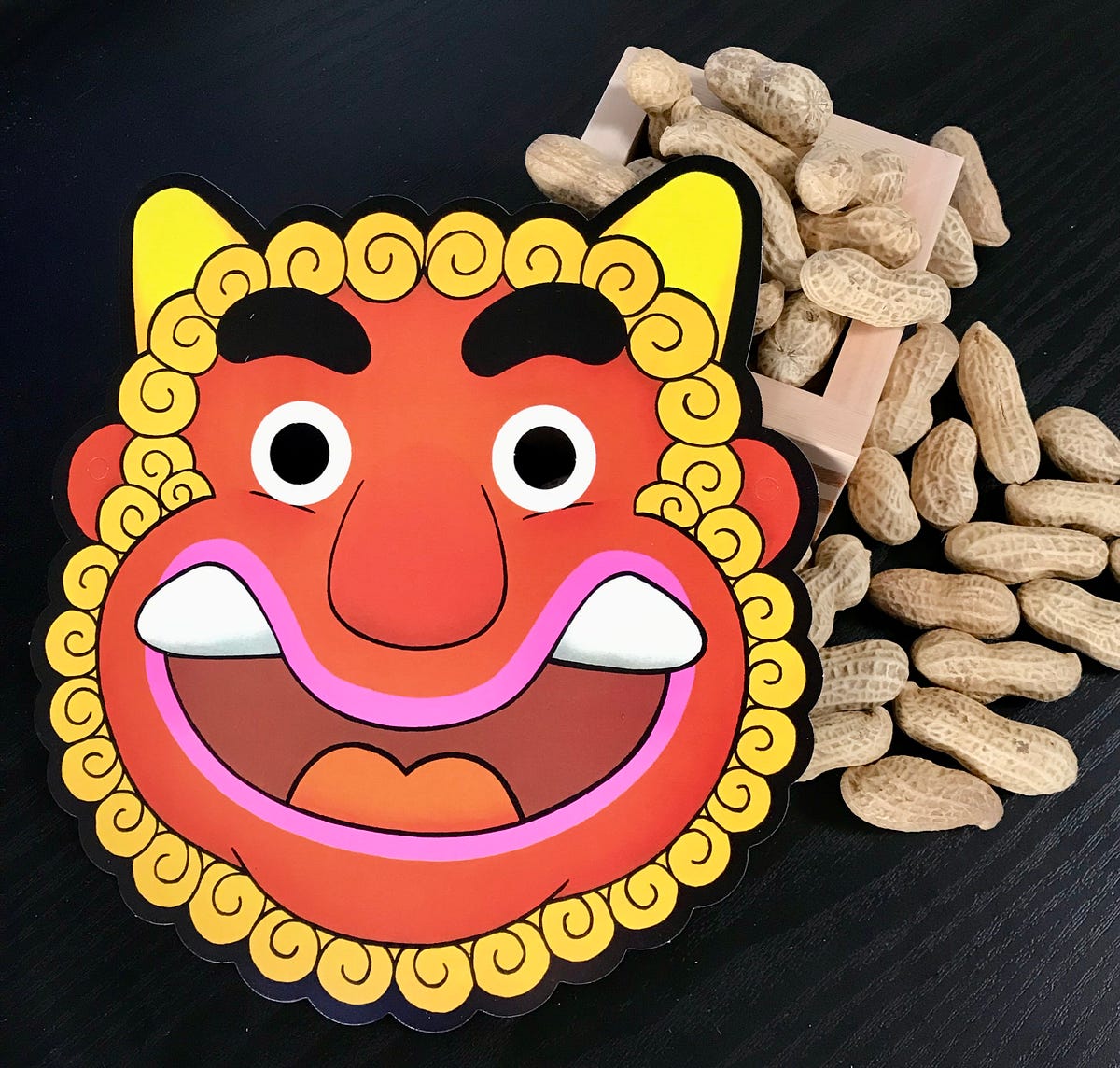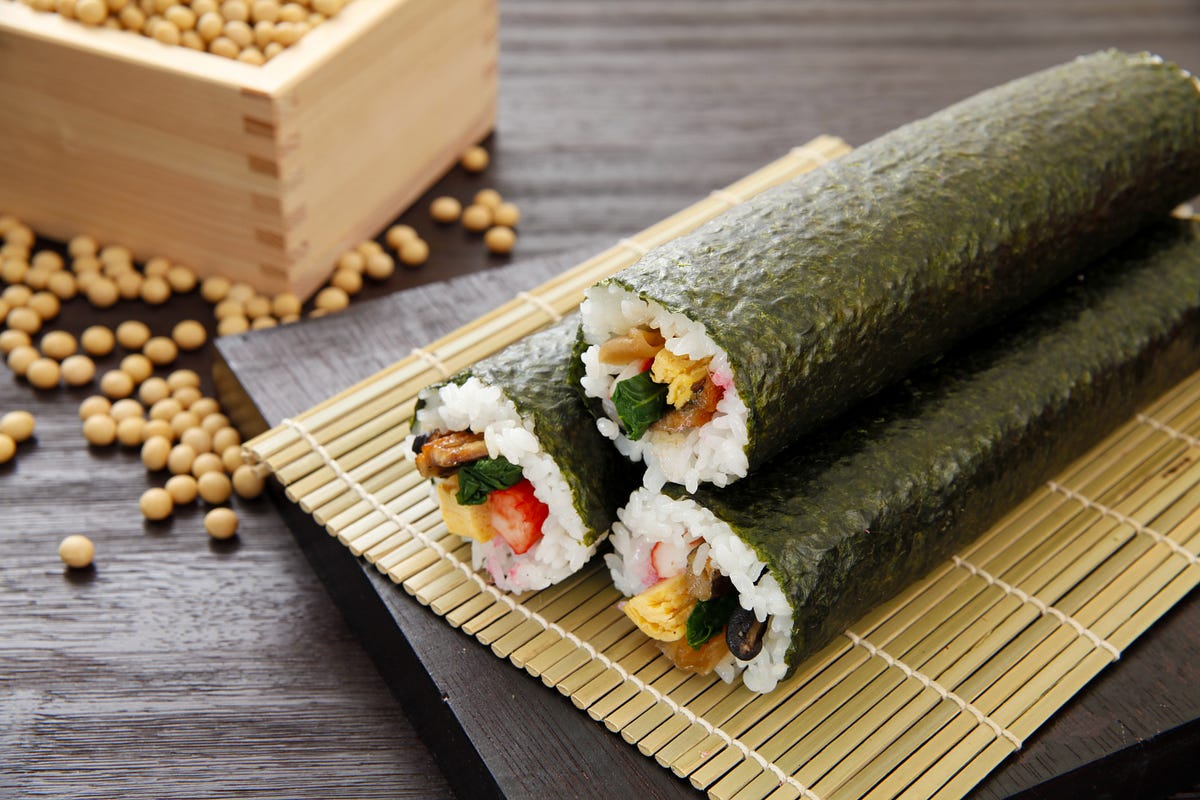Chase away the demons of misfortune for a fresh start in the spring
Each year in early February, Japanese people celebrate a day known as Setsubun. Setsubun, 節分, simply means the eve of a new season, in this case, spring. For a thousand years, Japanese have been chasing the demons of illness and misfortune out of their houses on this day.

A Brief History of Setsubun
The first known practice of Setsubun occurred in the Heian era (794–1195). A man dressed as a powerful demon — with golden eyes, a red garment, and carrying a shield and spear — marched around the imperial palace with a minion in tow, scaring away the lesser demons of misfortune and illness.
Common people warded off demons by decorating their entrance ways with holly leaves and sardine heads. Holly leaves were to poke the demon’s eyes and the stench of the sardine heads was thought to be a powerful demon-repellent.
In the Muromachi era (1336–1573), Japan imported Setsubun customs from the Ming Chinese, and these included throwing fukumame, 福豆, good fortune beans. A man with the same birth year as that year’s Chinese astrological animal would scatter roasted soybeans while calling out “Out with demons! In with good fortune!” In Japanese, “Oni wa soto! Fuku wa uchi!” 鬼は外! 福は内!
People would then pick up the beans and eat the same number as their age in the belief that it would grant them good health.
Why Scatter Beans?
Apparently, it comes down to a play on words.

“Demon” is Japanese is mä, 魔. “Destroy” is më 滅.
“Bean” in Japanese is mämë, 豆.
Different word, same sound.
Destroy demons = 魔滅, mämë. Beans = 豆, mämë.
Why are the Beans Roasted?
Let me answer that with a story.
Long, long ago, a people-eating demon was terrorizing a village. The terrified villagers cried out to god for help. In response to their pleas, god met with the demon and gave him some beans. He told him, “Plant these beans. If they sprout, you may eat people. If they don’t sprout and you eat people, I will rain down punishment upon you.”
“Great! This should be easy!” thought the demon, and he happily scattered the beans the god gave him. He waited and waited, but sprouts never emerged. Unaware that the god had given him roasted soybeans to sow in his field, the demon scratched his head in puzzlement.
The villagers were saved.
People should be careful to only scatter roasted soybeans on Setsubun. If, perchance, they use raw beans, they may inadvertently loose demons of illness and misfortune upon themselves.
Setsubun Across the Country

There are almost as many different customs and ways of celebrating Setsubun as there are places in Japan. Here are a few:
- People in Yamaguchi Prefecture historically ate whale meat, with the idea that eating such a big animal would result in good fortune, a big heart, and big, strong children.
- On the island of Shikoku, people eat fiber-rich konnyaku — a rubber-like food made from the corm of the konjac plant — to rid their bodies of uncleanness and toxins.
- People in the greater Tokyo area eat kenchinjiru — a soup made with root vegetables, konnyaku, and fried tofu — for the same reason.
- Because soybeans are difficult to grow in the volcanic soil of southern Kyushu, people in that area use peanuts to ward off demons at Setsubun. Other areas of the country have started using peanuts, too, as they are bigger, easier to find after throwing, and more tasty than soybeans. And since peanuts have shells, the nuts don’t get dirty when thrown on the ground.
- In the big cities, major temples and shrines host celebrities who draw large crowds who come to see the rich and famous toss soybeans.
Ehōmaki — Lucky Direction Sushi Rolls

Although the history is unclear, one theory states that the practice of eating big sushi rolls for good luck originated on the wharfs of Osaka in the early 20th century. Store-bought rolls didn’t become popular until 1989, when a canny convenience store owner in Hiroshima Prefecture started marketing pre-made “ehōmaki,” 恵方巻き, “lucky direction sushi rolls.” Within 10 years, people all across Japan were eating them on Setsubun.
(This story reminds me of the story of the innovative KFC owner who popularized fried chicken as a Christmas food.)
Ehōmaki usually contain seven fillings, one for each of the Lucky Gods. Eating ehōmaki is said to grant you your wish. For this to happen, the ehōmaki must not be cut, and you must sit in the year’s lucky direction and eat the whole roll without pausing or speaking.
In case you want to try it, 2022’s lucky direction is NNW.
How to Celebrate Setsubun
Aside from eating ehōmaki, there are specific steps to rid your house of demons and bring in good fortune for the next year.
- The day before, put roasted soybeans in a masu, traditional Japanese measuring box. Place the box on your home’s Shinto altar or else on a piece of white paper on a high shelf as an offering to the gods.
- Sometime between 8:00 and 10:00 on the evening of Setsubun, open your windows and doors. Then it’s time for the father of the house, or a male relative whose birth year is of the same Chinese astrological animal as the current year, to put on a mask and act the part of the demon.
- Hold your box of beans in your left hand near your chest, and starting at the back of your house, work your way through each room, throwing beans at the demon while shouting, “Out with demons!” until you reach your front door. Then, in order to keep him out, quickly shut the windows and door. (Don’t worry, the man just needs to take off his mask to be allowed back into the house. The demon has been banished.)
- Now scatter beans while shouting, “In with good fortune!”
- When your box is empty, pick up the beans and eat one for each year of your life, then an extra for good health. If you don’t like beans, you can drink lucky tea instead. You can make lucky tea, fukucha, 福茶, by brewing roasted soybeans, pickled plums, and kombu seaweed.
Wishing everyone a happy Setsubun, and a year of good health, good fortune — and no demons!
References:
https://tamisan.com/4496/, 節分の起源, https://cookpad.com/ https://skywardplus.jal.co.jp/plus_one/calendar/setsubun/
If you have questions about Japan or suggestions for articles, please add them in the comments. For more photos and information on Japan, follow me on instagram at: https://www.instagram.com/more_than_tokyo/




